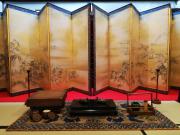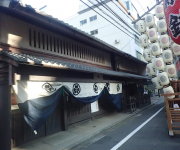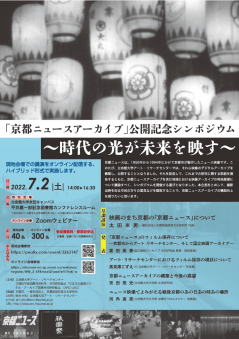-
[イベント情報]July 23, 2022(Sat)
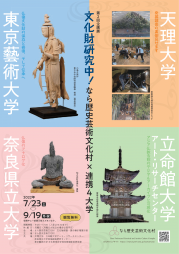 Based on a research cooperation agreement with Nara Prefecture, the project on the digital archiving and 3D visualization of Taimadera Temple in Nara--a national treasure--has been conducted by the ARC faculty member Prof. Satoshi Tanaka (College of Information Science and Engineering, RU) and his team.
Based on a research cooperation agreement with Nara Prefecture, the project on the digital archiving and 3D visualization of Taimadera Temple in Nara--a national treasure--has been conducted by the ARC faculty member Prof. Satoshi Tanaka (College of Information Science and Engineering, RU) and his team.Their research results, along with those of three other universities, will be showcased as part of the special exhibition 'Researching Cultural Heritages' at the Nara Prefecture Historical and Artistic Culture Complex between July 23 and September 19, 2022.
Special exhibition ''Researching Cultural Heritages--Cooperation of Nara Prefecture Historical and Artistic Culture Complex with 4 Universities'
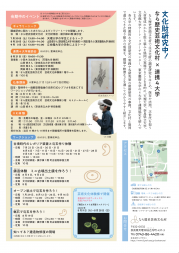
Date: July 23 (Sat) - September 19 (Mon), 2022
Time: 9 am - 5 pm (entry until 4.30 pm)
Location: Nara Prefecture Historical and Artistic Culture Complex, Exhibition Room (B1 floor)
Entrance fee: Free entry
Organizer: Nara Prefecture Historical and Artistic Culture Complex
Co-organizers: Tenri University; Art Research Center (ARC), Ritsumeikan University; Nara Prefectural University; Tokyo University of the Arts
>> See official website of the Nara Prefecture Historical and Artistic Culture Complex for details.
[イベント情報]July 21, 2022(Thu)The Art Research Center (ARC) and Hoosiers Corporation held the Byobu Matsuri, or Folding Screen Festival--a traditional event related to the Gion Matsuri--at the Nagae Family Residence in Kyoto from July 14-16, 2022.
 The Nagae Family Residence is a tangible cultural property designated by Kyoto City. Under the theme of 'Traveling,' folding screens, picture scrolls, and other artworks selected by students of the College of Letters, Ritsumeikan University, had been showcased at the residence this year.
The Nagae Family Residence is a tangible cultural property designated by Kyoto City. Under the theme of 'Traveling,' folding screens, picture scrolls, and other artworks selected by students of the College of Letters, Ritsumeikan University, had been showcased at the residence this year.Date: July 14 - 16, 2022
Venue: Nagae Family Residence, Kyoto
Time: 10:00-19:00 (last admission at 18:30)
*Note: Closed for visitors between 18:00 and 19:00 on July 15 due to a private reservation.
Reservations: Not required
Admission fee: 700 yen (to be used for preservation and repair of the house)
Related website: http://www.nagaeke.jp/
Background
The Nagae family were merchants of the kimono fabric. Their family residence, which was rebuilt and renovated after a big fire in 1864, served both as a working and living space for many generations.
The ARC has been digital-archiving the collection belonging to the Nagae Family Residence after Ritsumeikan University received it as a donation. Subsequently, the ARC has become involved in planning and managing the Byobu Matsuri held annually at the residence.
Based on an industry-academia collaboration with Hoosiers Corporation, with which Ritsumeikan University concluded a Memorandum of Understanding (MoU) in May 2015, this activity is to preserve and utilize the Nagae Family Residence for the development and promotion of education and research.
[イベント情報]July 14, 2022(Thu)The Art Research Center (ARC) and Hoosiers Corporation will be holding the Byobu Matsuri, or Folding Screen Festival--a traditional custom of the Gion Matsuri--at the Nagae Family Residence in Kyoto from July 14-16, 2022.
 The Nagae Family Residence is a designated tangible cultural property by the City of Kyoto. Under the theme of 'Traveling', folding screens, picture scrolls, and other visual materials selected by students of the College of Letters, Ritsumeikan University, will be showcased at the residence this year.
The Nagae Family Residence is a designated tangible cultural property by the City of Kyoto. Under the theme of 'Traveling', folding screens, picture scrolls, and other visual materials selected by students of the College of Letters, Ritsumeikan University, will be showcased at the residence this year.Date: July 14 - 16, 2022
Venue: Nagae Family Residence, Kyoto
Time: 10:00-19:00 (last admission at 18:30)
*Note: Closed for visitors between 18:00 and 19:00 on July 15 due to a private reservation.
Reservations: Not required
Admission fee: 700 yen (to be used for preservation and repair of the house)
Related website: http://www.nagaeke.jp/
Background
The Nagae family were merchants of the kimono fabric. Their family residence, built between the late Edo period and the Taishō period, served both as a working and living space for many generations.
The ARC has been digital-archiving the collection belonging to the Nagae Family Residence after Ritsumeikan University received it as a donation. Subsequently, the ARC has become involved in planning and managing the Byobu Matsuri held annually at the residence.
This activity is based on an industry-academia collaboration with Hoosiers Corporation, concluded with a Memorandum of Understanding (MoU) in May 2015, to preserve and utilize the Nagae Family Residence for the development and promotion of education and research.
[イベント情報]July 13, 2022(Wed)Background:
Professor Hans Bjarne Thomsen has held the Chair for East Asian Art History at the Institute of Art History, University of Zurich, since 2007. His publications include Japanese Woodblock Prints from the Ernst Grosse Collection (2019). Supported by the International Joint Digital Archiving Center for Japanese Art and Culture (ARC-iJAC), Art Research Center, Prof. Thomsen conducted his research project 'Tracing the Reception of Japanese Art in the West: Case Study of Freiburg im Breisgau' in FY 2021, followed by the project 'Tracing the Reception of Japanese Art in the West: The Case of Monte Verità' in FY 2022.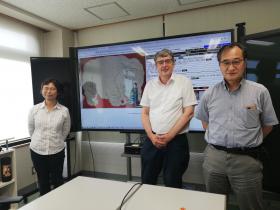 Professor Thomsen, thank you very much for your time today. How did you first connect with the Art Research Center (ARC)?
Professor Thomsen, thank you very much for your time today. How did you first connect with the Art Research Center (ARC)?Prof. Thomsen: I met Professor Akama in Geneva more than a decade ago. Since then, we have embarked on several projects digitizing and cataloging Japanese woodblock prints at the Print Cabinet in Geneva.
Thanks to the efforts of the ARC in digital archiving of these prints, we have held two exhibitions at the Print Cabinet--one on kabuki prints in 2014 and the other on surimono prints that is currently ongoing.
In 2016, the University of Zurich also held a three-day international symposium on katagami in Zurich where several ARC faculty members presented their research.
You are the leader of two ARC-iJAC international joint research projects. 'Tracing the Reception of Japanese Art in the West: Case Study of Freiburg im Breisgau' was conducted in the fiscal year of 2021, while you examine the case of Monte Verità in the current fiscal year. Could you tell us your motivation for these projects?
Prof. Thomsen: There has been a prolonged interest in academia to study Japanese art outside of Japan that goes back to the 1970s. However, the focus has mainly been on meibutsu (名物) and their connections to Japan.
My research interest lies not only in finding and identifying objects that have been traditionally seen as meibutsu but to expand on this. Some Japanese art collections across Germany and Switzerland, such as the collections left behind by Ernst Grosse (1862-1927) and Baron Eduard von der Heydt (1882-1964), have been little explored.
As part of our ARC-iJAC projects, we have been digital archiving and cataloging these artworks as we intend to not only examine their connection and existence within Japanese art history but place them in context of both their Japanese origin and a piece of local Swiss/ German history.
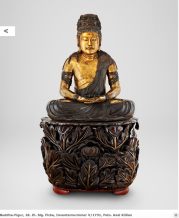 In your ARC-iJAC projects, you also investigate the art collectors and other agents involved in bringing artworks from Japan to Europe. Could you tell us why?
In your ARC-iJAC projects, you also investigate the art collectors and other agents involved in bringing artworks from Japan to Europe. Could you tell us why?Prof. Thomsen: We hope to get a better understanding of the roles these various pioneers held in spreading public and academic knowledge of Japanese art.
In graduate schools, the students typically look at the most recent texts, whereas older ones are neglected because they are considered 'old history'.
We are inclined to think that there is a sudden burst of light, and we know everything about a subject--but it builds over time. The gradual growth of knowledge on certain subjects tends to be ignored in the West.
Japanese collections had been brought to Europe for particular reasons--the art collectors could have considered them interesting, and perhaps important. The motivations and individual stories of these collectors--two key persons were Ernst Grosse and Baron Eduard von der Heydt--should not be forgotten.
For instance, despite his early influence in East Asian art studies and contributions to the establishment of the Japanese art collections in the West, the role of Ernst Grosse has largely been forgotten. Furthermore, many other people, including middlemen, were involved in the process of knowledge transfer of Japanese art in the West. It was not a simple process.
To 'resurrect' these histories of learning, we should give credit to these pioneers.
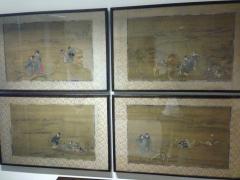 Has there been something particularly fascinating that you found regarding these pioneers?
Has there been something particularly fascinating that you found regarding these pioneers?Prof. Thomsen: For instance, as opposed to Ernst Grosse, von der Heydt had never been to Japan. So, where did he buy his artworks, and how did they arrive there?
Furthermore, von der Heydt gave his East Asian art collection to Museum Rietberg in Zurich. However, some key pieces, including a fine collection of Japanese woodblock prints, never went to Rietberg. Instead, they have remained at his home, a modernist-style Bauhaus building in Monte Verità where they have been largely forgotten and become a part of hotel decoration.
So, what are the pieces he did not give to Museum Rietberg, and what does this tell us about the status of these objects?
We would like to address some of these questions as part of our ARC-iJAC projects, directed toward rediscovering a forgotten history of the reception of Japanese art in the West.
We intend to fully digitize and catalog the collections of Grosse and von der Heydt that have been lost to the public.
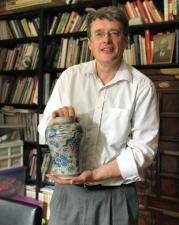
Could you please tell us more about your post-COVID plans?
Prof. Thomsen: I plan to continue working with Japanese art collections here in Europe. In the last fifteen years since joining the University of Zurich, I have had the pleasure working with more than 50 different museums--including museums in Switzerland, Germany, Ukraine, France, and Italy.
Regarding our ARC-iJAC projects, we faced the problem during the pandemic that we could not enter the museums for a long time. Therefore, many of the Japanese artworks Ernst Grosse left behind still remain in cardboard boxes. Once we get permission from the museums, I plan to take higher-quality images of the objects that we can replace and add to our ARC database.
I am excited that there is still an incredible research potential in these art collections in Freiburg and Monte Verità, and I hope to continue the delightful research collaboration with the ARC for many years to come.
(This interview was conducted by Yinzi Emily Li.)
[イベント情報]July 12, 2022(Tue)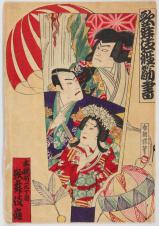 As part of its FY 2022 ARC-iJAC project, the Shochiku Otani Library released a digital archive of pre-war theater programs of the Kabuki-za Theater in Tokyo on July 1, 2022.
As part of its FY 2022 ARC-iJAC project, the Shochiku Otani Library released a digital archive of pre-war theater programs of the Kabuki-za Theater in Tokyo on July 1, 2022.Based on an agreement between the library and the Art Research Center (ARC), these digitized programs have been integrated into the Shochiku Otani Library's Shibai Banzuke Browsing System (松竹大谷図書館所蔵・芝居番付検索閲覧システム), developed and made available to the public by the ARC.
Shochiku Otani Library <Shibai Banzuke Browsing System>
< https://www.dh-jac.net/db1/ban/search_shochiku.php?enter=shochiku&lang=en >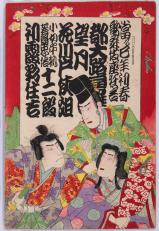
In 2020, the library launched a crowdfunding initiative to raise funds for digitizing and preserving approximately 1,180 volumes of pre-war theater programs--also known as sujigaki (筋書)--of the Kabuki-za Theater (歌舞伎座).
With this release, it has been possible to search and browse the Kabuki-za Theater sujigaki programs from the theater's establishment in Meiji 22 (1889) to the pre-war period on the web.
The Shibai Banzuke Portal Database made available by the ARC allows users to simultaneously search not only the ARC's own banzuke collection but also those of the Shochiku Otani Library and other institutions.
Along with the release of the sujigaki of the Kabuki-za held by the Shochiku Otani Library, the pre-war sujigaki of the Imperial Theater in Tokyo (帝国劇場) in the ARC collection are also made available for viewing.
We strive to continue our efforts to facilitate research in Japanese theater studies through digital archives.
On July 7, 2022, the Kyoto Shimbun featured an article on the Kyoto News Archive, a digital archiving project led by Professor Keiji Yano (College of Letters, Ritsumeikan University).
The Kyoto News Archive was released in the ARC Virtual Institute on June 24, 2022:
< ARC Virtual Institute: The Kyoto News Archive >(***UPDATE: Please note that the event will be held online only.***)
The Art Research Center (ARC), Ritsumeikan University, is pleased to announce the Commemorative Public Symposium 'The Kyoto News Archive ~Lights of the Past Reflecting the Future~'.
(*This event is held in Japanese)
Date: July 2 (Saturday), 2022
Time: 14:00 - 16:30 Japan Standard Time
Topic: The Kyoto News Archive ~Lights of the Past Reflecting the Future~
Event Venue: online via Zoom
Registration methods:
Click here to register for online participation via ZOOM. (Online: Capacity of 300 seats, first-come-first-served basis)
Background
In collaboration with the Toy Film Museum in Kyoto, the Art Research Center (ARC), Ritsumeikan University, has been building a digital archive of Kyoto News--a series of news videos produced by the Kyoto City between 1956 (Showa 31) to 1994 (Heisei 6).
During that period of time, it was shown as a newsreel in movie theaters in Kyoto before the start of the main film. As one of the earliest regional newsreels, the videos are a valuable historical testimony of Kyoto City. They have recorded a wide range of topics in the city, including seasonal customs and festivals.
The Kyoto News Archive has partly been completed and opened to the public, so we are holding a public symposium in commemoration of this video series to report on our research outcomes thus far and to discuss the prospects for regional video archives, including the Kyoto News Archive.
Organizer:
International Joint Digital Archiving Center for Japanese Art and Culture (ARC-iJAC), Art Research Center, Ritsumeikan University
Supported by: Kyoto City, Toy Film Museum
Inquiries: Art Research Center, Ritsumeikan University
E-mail: arc-jimu(at)st.ritsumei.ac.jp (please change "at" to @)
URL: https://www.arc.ritsumei.ac.jp/
[イベント情報]May 27, 2022(Fri)The 102nd International ARC Seminar, held on May 25, 2022, is now available on YouTube.
The program was as follows:
Topic: A trial to classify Mongolian legal documents using deep learning
Speaker: Biligsaikhan Batjargal (Affiliate Research Professor, Research Organization of Science and Technology, Ritsumeikan University)
We hope you enjoy the video!
The 101st International ARC Seminar, held on May 11, 2022, is now available on YouTube.
The program was as follows:
Topic: Going to War During the Taisho Period: Japan's Siberian Intervention of 1918-1922 as Illustrated by the Pictorial Diaries of Infantryman Takeuchi Tadao
Speaker: Dr. Nadine Willems (Lecturer in Japanese History, School of History, University of East Anglia)
We hope you enjoy the video!
[イベント情報]May 16, 2022(Mon)The 100th International ARC Seminar, held on April 27, 2022, is now available on YouTube.
The program was as follows:
Topic: KOBAYASHI, Ichizo: Social and Cultural Projects as the Two Wheels of his Business
Speaker: Yoshiyuki SENKAI (Executive Board Member and Director, Itsuō Art Museum; Ichizo Kobayashi Memorial Museum; and Ikeda Bunko, Hankyu Culture Foundation)
We hope you enjoy the video!


